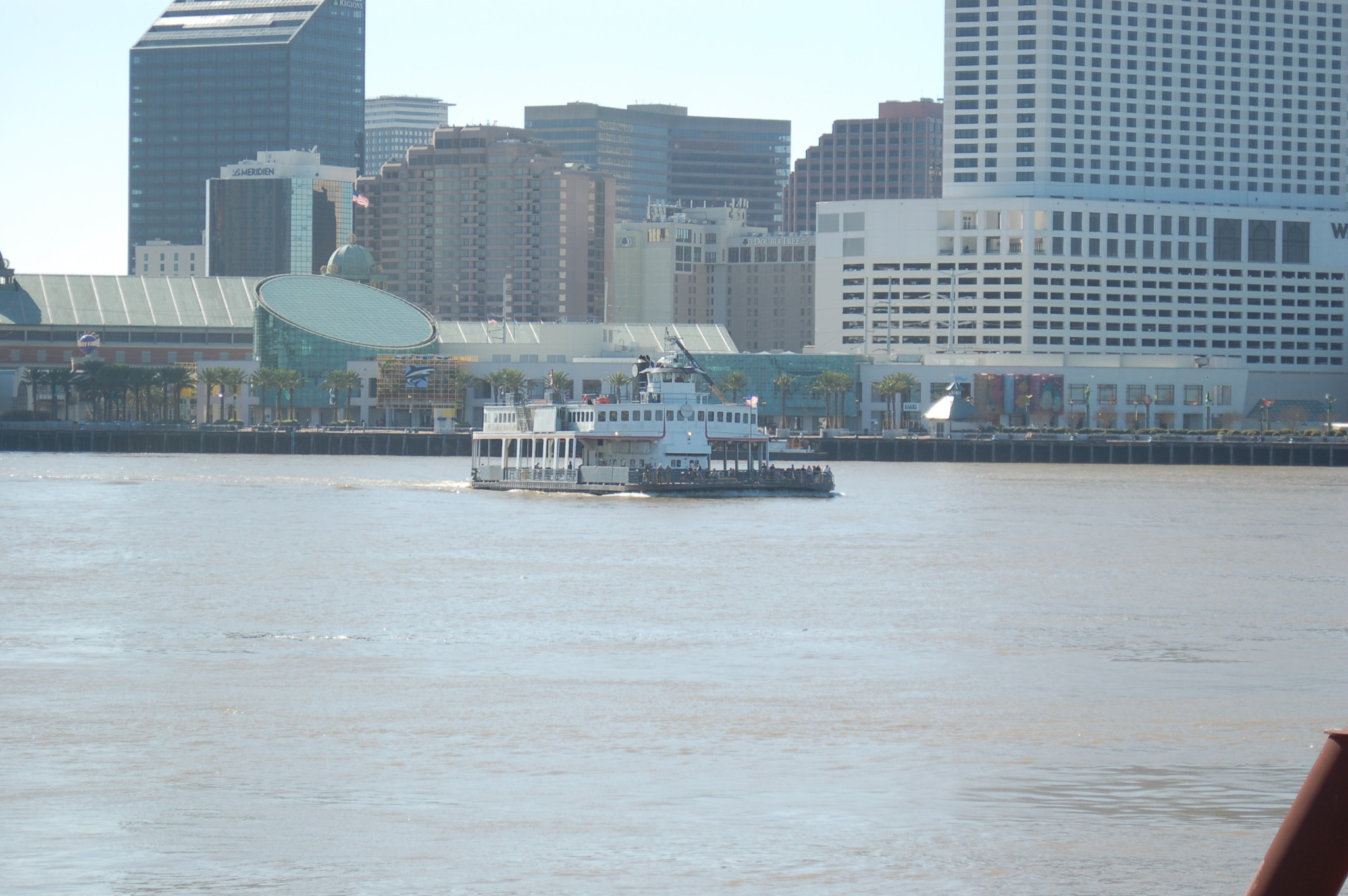I was born and raised in New Orleans, but it wouldn’t take me long to count the number of times I’ve ridden on the city’s ferry system. And that is exactly the biggest problem the city has as far as its ferry system is concerned — not enough people use it. In my case, I commuted across the river for 18 years and used the bridges to get to work. Most people do.
The system is down to two main routes, one which carries passengers only and one that carries both passengers and vehicles. I want to concentrate here on the passenger-only route that connects downtown New Orleans with the West Bank — a distance of about one-half a mile.
WARNING: Here is where the story gets so complicated your head may explode if you read on. Historically, the ferry system was largely funded by the state of Louisiana. In 1989, the state, through the Mississippi River Bridge Authority, built a new bridge across the river. Drivers had to pay a toll to travel from the West Bank to the East Bank. The money from the tolls was used to pay for the bridge. Once the bridge was paid for, the tolls remained and some of that money went to support the ferry system in New Orleans.
In 2012, voters forced the state to remove the tolls, which added to the financial problems the New Orleans ferry system was already experiencing. What followed is a gestalt relationship among the state, which owns the two older ferries on the route; the city’s Regional Transit Authority (RTA), which also runs the bus and streetcar routes in New Orleans; and a private company called Transdev North America, which actually does the hands-on operations for the RTA. Following so far?
Transdev North America says it’s the largest private provider of multiple modes of transport in North America. Cities, counties, airports, companies and universities contract with them to operate their transportation systems. “In cities all across the country, we’re helping our clients move toward making public transit equivalent to the city’s lifeblood, circulating and connecting riders to the people and places they care about,” according to its web page.

One of two new 149-passenger ferries expected to begin running the downtown route soon. Metal Shark photo
Now we mix in two new 105', 149-passenger ferries that Metal Shark built for the route and delivered to the RTA in 2018. The ferries are not yet up and running on the route but are expected to be in service soon.
The new ferries, RTA 1 and RTA 2, are high-speed, aluminum catamaran passenger ferries built to replace the old ferries, one built in the 1930s and one built in the 1970s, currently operated on the downtown route. Officials say the new ferries will usher in new standards of comfort, safety, reliability, and efficiency.
The boats were designed by BMT and built to meet the specific requirements of the RTA. The Subchapter T ferries are powered by twin 715-hp Caterpillar C-18 Tier 3 diesel engines and feature a proven, low wake/low wash, high efficiency hull design for reduced environmental impact.
So, why build new high-speed ferries for a half-mile run? “With these boats we’re looking forward so they can serve our needs in the future,” Bertrand Donnes, New Orleans Ferry Service, told an audience at last week’s Passenger Vessel Association meeting in New Orleans. “We built these boats having in mind a water taxi service in the future. Right now there’s no connecting infrastructure out there for that. Our main challenge right now is to get these [new ferries] up and running.”
What is the New Orleans Ferry Service? It’s mixed in there somewhere with the state, the RTA, and Transdev.





